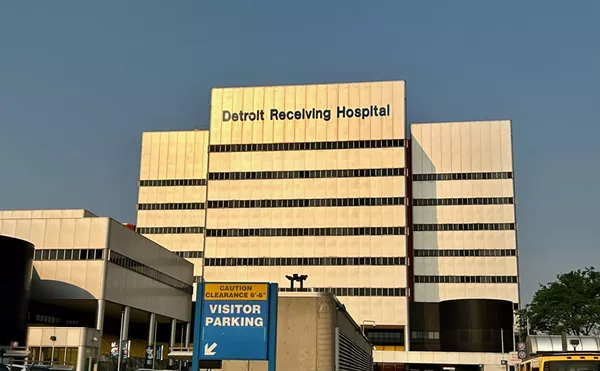
Audio By Carbonatix
[
{
"name": "GPT - Leaderboard - Inline - Content",
"component": "35519556",
"insertPoint": "5th",
"startingPoint": "3",
"requiredCountToDisplay": "3",
"maxInsertions": 100,
"adList": [
{
"adPreset": "LeaderboardInline"
}
]
}
]
Detroit and Flint are at a place no city wants to be: the U.S. Department of Housing and Urban Development’s list of "double trouble" cities.
To make the roster, a city must have an unemployment rate far above the national average combined with population decreases and/or persistently high poverty rates.
Detroit and Flint, both of which have problems on all three counts, were among 74 cities identified as in "double trouble" by HUD in a recent report in the department’s "Places Left Behind in the New Economy" series.
HUD Secretary Andrew Cuomo summed up the problem in a recent speech before the National Press Club:
"They say the rising tide raises all boats. Well, this tide is rising so fast that it’s drowning some. .... There are more millionaires made by this economy than ever before, but the top 1 percent control 40 percent of the wealth. Highest home ownership rate at 66.7 percent, but you still have 600,000 homeless Americans who are going to sleep on our streets tonight.
"The new American paradigm is the great American paradox."
For Detroit and Flint, the paradox is that in an economy undergoing record expansion the two cities are still experiencing high unemployment and poverty as well as population loss.
The good news is that even these places are better off than less than a decade ago. With the national unemployment rate at 4.5 percent, Detroit in 1998 recorded a 7 percent rate – down 10 points since 1992. During the same period, Flint’s unemployment rate fell from 20 percent to 9.9 percent.
Population loss has also slowed. Detroit’s population dropped by nearly 15 percent between 1980 and 1990, but only 2.7 percent – from 1,027,974 to 1,000,272 between 1990 and 1996.
The report is upbeat about the prospects of these and other "doubly burdened" cities.
"Along with struggling rural communities and older suburbs … they represent America’s most important emerging markets – markets that are reflected in locally unmet consumer demand, underutilized labor resources, and developable, well-located land that is rich in infrastructure."
An upcoming HUD report in the series is to highlight ways communities can take advantage of the opportunities inherent in these assets.





